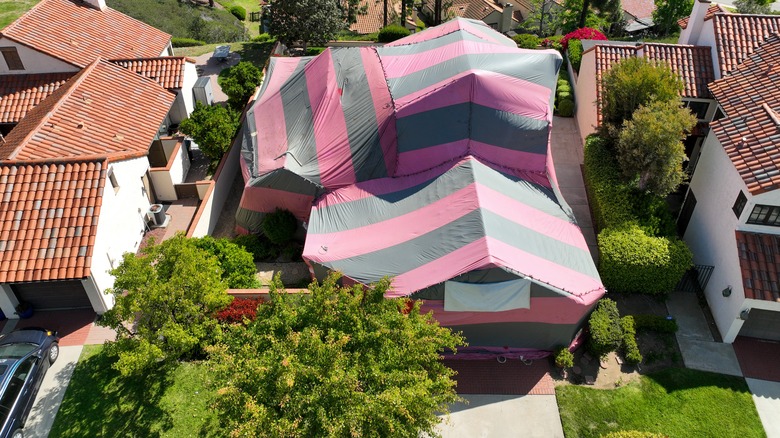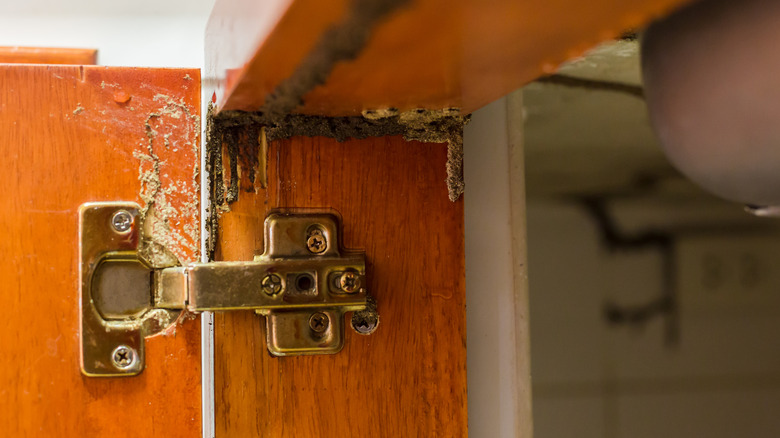An Expert Tells Us The Group Of Insects You Never Want In Your Home
House Digest spoke exclusively with Steve Cukierski, a knowledgeable home inspector and owner of The Art of Home Inspection, who had some valuable advice about a group of insects with its very own acronym. If you're a homeowner, this most assuredly concerns you. "As a home inspector, I've come across my share of bugs I'd rather forget — like giant cave-crickets in tight crawl spaces, and spiderwebs galore in basements," he said. "While these insects can be creepy, they are relatively harmless. However, there's a group of insects every homeowner should be aware of that aren't so harmless — Wood Destroying Insects, or WDI."
This is a group of insects that you should, at the very least, be able to accurately identify. We're talking about termites, wood boring beetles, and carpenter ants. Why are these particular insects on Cukierski's "blacklist?" It's simple. Because they're the kind of insects that can do extensive damage to homes, apartment buildings, condos, and other structures made with wood. If there's wood in your foundation, you're at risk. And for those who have not had an inspection in longer than you can remember, or you simply haven't had time to research this information yet, it's time to get started.
Signs of WDI in your home
So, why are Wood Destroying Insects attracted to our homes? "WDI play a vital role in nature by helping to break down and decompose dead trees," Cukierski explained. "Because many of our homes are built using dead trees (lumber), homeowners often need to take protective measures to prevent costly damage and make sure these insects stay in nature where they belong." He also notes the importance of identifying infestations by searching for evidence, such as by finding obvious structural damage to wood or dead wood-eating insects.
Another sign Cukierski says to look out for is "frass," which is a powdery substance excreted by WDI. Some other signs of these destructive insects include finding tiny bore holes in wood, blistering, bubbling, or peeling paint on wood surfaces, hollowing or darkening of wood, and the appearance of mud or shelter tubes. Cukierski advises any homeowner who believes WDI may be feasting on their home to contact a local home inspector or pest control company to verify their suspicions. These professionals will do an inspection and come up with a plan for eradication. The longer you wait, the more costly it will be to repair the damage.

